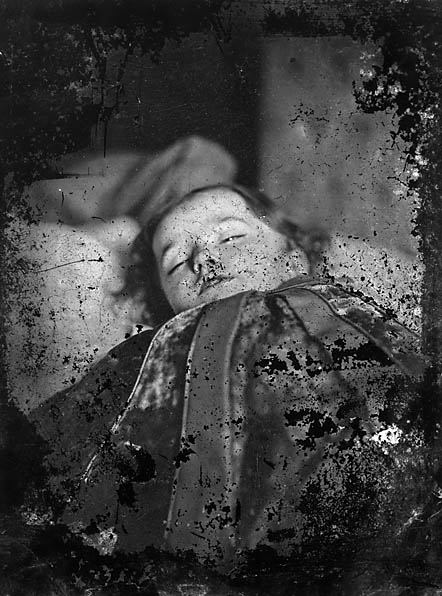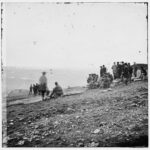
Victorian post-mortem photography might seem unsettling today, but during the 19th century, it was a popular practice. These photos were often the only visual memory families had of loved ones after they passed. Though the idea of posing corpses for photographs may strike modern audiences as creepy, Victorian post-mortem photography held deep emotional and cultural significance. In this article, we’ll explore the strange and eerie practice, its connection to art, and why it mattered so much during that era.
Why Post-Mortem Photography Became Popular
In the 19th century, photography was still in its infancy. At the same time, death was a much more visible part of daily life than it is today. The Victorian era saw higher death rates, especially among children, due to diseases like tuberculosis and cholera. With the advent of photography, families found a new way to memorialize their deceased loved ones. For many, these images were the only tangible memory they had.
The death of Queen Victoria’s husband, Prince Albert, in 1861, added to the fascination with mourning and death in Victorian society. After his death, the queen remained in deep mourning for the rest of her life, influencing the culture of grief. Portraits of the dead—known as memento mori (Latin for “remember that you must die”)—became a way for people to deal with loss. In fact, mourning traditions, from black clothing to post-mortem portraits, were ingrained in the Victorian way of life.
But why photography? Unlike painted portraits, which could take months, a photograph captured a person’s likeness quickly. And, as photography became more affordable, even middle-class families could afford these eerie memorials.
The Artistic Approach to Death
Post-mortem photography wasn’t just about capturing a corpse; it had a unique artistic quality. Photographers took great care in arranging their subjects. In some cases, they dressed the deceased in their finest clothes, propped them up in lifelike poses, and surrounded them with flowers. The goal was often to make the deceased appear to be sleeping peacefully, an aesthetic that combined both beauty and sorrow.
The photographers of the time paid close attention to light, shadows, and composition—elements that are still critical in art today. Many of these photos were taken with soft, diffused lighting to create an ethereal effect. The use of props and settings, like chairs or beds, gave the appearance of life. It wasn’t uncommon to see family members posing with the dead, enhancing the illusion that their loved one was still present.
These images were often lovingly framed and displayed in family homes. What might feel morbid to us now was seen as an intimate connection to a lost family member back then. Victorian society didn’t shy away from death but rather found ways to incorporate it into everyday life through these haunting, yet beautiful, photographs.
The Emotional Significance of Post-Mortem Photos
The emotional weight behind post-mortem photography can’t be overstated. For many families, these photographs were the last physical connection they had to the person who passed away. In an era without digital storage or easy access to multiple images of a person, the post-mortem photograph became a cherished keepsake.
Families often couldn’t afford to have photographs taken while a person was alive, making post-mortem photography a rare opportunity to capture their likeness. Imagine losing a child to illness, and the only image you have to remember them is one where they appear serene, lying in peaceful repose. These photos served as an attempt to hold on to something that felt fleeting—life itself.
In the context of art, this practice blends realism with a deep emotional undercurrent. The photographs evoke a sense of melancholy, but they are also highly stylized, with each element carefully chosen. Flowers, soft lighting, and clothing were not just props; they symbolized purity, peace, and the desire to remember someone at their best. This emotional connection is a crucial aspect of why these photos hold so much artistic weight.
One Victorian woman, reflecting on a post-mortem photograph of her child, said: “It is as if she is sleeping, forever peaceful. I look at her every day, and though it brings sadness, it also brings a measure of comfort.” For many families, this was the delicate balance that post-mortem photography struck—a blend of sorrow and solace, art and mourning.
The Technical Challenges of Photographing the Dead
Photographing the dead came with unique technical challenges. Early cameras required long exposure times, meaning the subject had to remain perfectly still. While this was a hurdle for living subjects, it became an advantage when photographing the deceased, who obviously wouldn’t move. However, photographers still had to deal with other issues, like rigor mortis, body positioning, and maintaining the corpse’s appearance over time.
The process often required careful manipulation of the body. Photographers used stands, straps, and hidden supports to make the deceased appear lifelike. These supports were placed behind or beneath the subject, helping to create an illusion of vitality. In some cases, the eyes of the deceased were painted open after the photo was taken, or a family member would pose with their arm around the deceased, further enhancing the lifelike quality of the portrait.
Lighting also played a key role in this art form. Early photography depended on natural light, and photographers would position their subjects near windows to capture the best possible lighting. Shadows were used to hide imperfections or signs of decay, while bright light was employed to bring out the details of clothing and facial features.
Because exposure times could last several minutes, any slight movement by the photographer or family members could ruin the photo. In many cases, multiple images were taken to ensure at least one turned out as intended. Given the technical challenges, post-mortem photography required incredible skill and patience, highlighting the artistry involved in these deeply emotional portraits.
The Cultural Acceptance of Mourning
To truly understand why post-mortem photography was so widely accepted in Victorian society, we need to delve into the culture of mourning during that time. Queen Victoria’s prolonged mourning for Prince Albert set the tone for the era. Mourning wasn’t a brief process; it was a way of life. Mourning clothes, rituals, and memorials became central to how Victorians dealt with grief.
Wearing black was expected for long periods, and mourning etiquette dictated that women in particular show their sorrow publicly. Funerals were elaborate, with mourners often wearing black veils, gloves, and even jewelry made from the hair of the deceased. Grief was not hidden away but displayed openly, with post-mortem photography acting as a visual extension of this cultural acceptance of death.
The role of religion also played a significant part. In an era when many believed in an afterlife, these photographs could be seen as capturing a person’s final transition from this world to the next. Death, while tragic, was viewed as a passage rather than an end, and the images provided a form of comfort, portraying the deceased in a state of eternal rest.
This cultural context explains why the practice, which now feels so unsettling, was embraced with such ease. For the Victorians, death was not the taboo subject it often is today; it was a shared, inevitable part of life that was confronted head-on.
The Evolution of Mourning Photography
As the Victorian era came to a close, so too did the practice of post-mortem photography. Advances in medicine reduced the frequency of death from diseases like cholera and tuberculosis, while societal views on death and grief began to change. By the early 20th century, death was increasingly medicalized and distanced from everyday life.
At the same time, photography technology improved, making it easier to capture living people, even those who couldn’t afford formal portraits in the past. This meant families were more likely to have images of their loved ones taken while they were still alive, reducing the need for post-mortem photography.
Yet, the legacy of these photos remains. Many of them still exist today, tucked away in family albums or stored in museums. They serve as haunting reminders of a time when death was much more present in everyday life and art played a vital role in helping people process loss.
Though the practice is no longer common, post-mortem photography paved the way for later artistic movements that grappled with themes of death and mortality. Even modern photographers and artists look to this period as a source of inspiration, reflecting on how art can bridge the gap between life and death.
Modern Reactions to Post-Mortem Photography
The reaction to post-mortem photography today is often one of shock or discomfort. We live in a culture that tends to avoid discussing death openly, making the idea of photographing the dead seem macabre. However, there’s a growing appreciation for the artistry and emotional depth behind these images, particularly among collectors and historians.
In fact, post-mortem photographs are now considered valuable artifacts, providing insight into Victorian society’s relationship with death and grief. Museums have begun to display these images as part of exhibitions that explore the history of photography, mourning, and the human response to loss.
Modern collectors, especially those interested in macabre or unusual items, also seek out these photos. They are drawn not just by the eerie subject matter, but by the beauty and craftsmanship behind them. The photos serve as a window into a time when death was accepted as a natural part of life, and mourning was woven into the very fabric of art and culture.
As cultural attitudes toward death continue to evolve, we might look back at post-mortem photography with new eyes, appreciating its role in helping people cope with the inevitability of loss. It reminds us that art has always been a way to process and make sense of life’s darkest moments, even those that scare us.
Conclusion
Victorian post-mortem photography is a fascinating, if unsettling, window into a past era’s attitudes toward death and grief. These haunting images were far more than eerie portraits of the dead; they were works of art that helped families memorialize their loved ones in an age where death was far more common. Through careful posing, lighting, and composition, photographers turned these final portraits into deeply emotional keepsakes. Today, while the practice might be long gone, the legacy of post-mortem photography still lingers, reminding us of art’s powerful role in making sense of life—and death.




